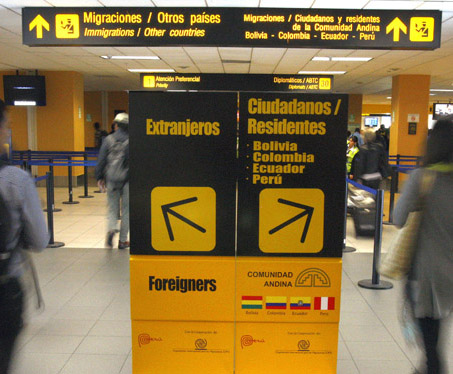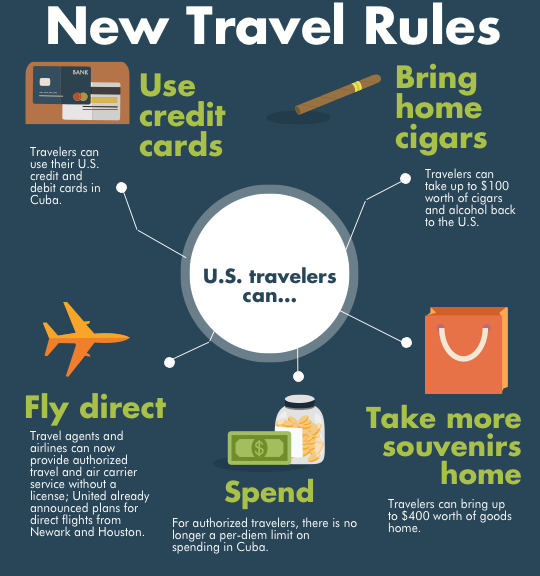Explainer: Seven Travel Destinations to Watch in Latin America
Explainer: Seven Travel Destinations to Watch in Latin America
Several countries are betting big on tourism as falling commodity prices slow growth in Latin America.
Latin America may be facing its slowest rate of economic growth since the global recession, but the region continues to see growth in tourism, and some countries are betting on tourism revenue as the global commodity boom stagnates. The World Travel and Tourism Council (WTTC) found that tourism contributed $142.5 billion to the region’s GDP in 2013—or 3.3 percent of total GDP—and estimated that tourism’s contribution rose to $147.7 billion in 2014, or 3.7 percent of GDP. Investment in travel and tourism was up in 2014, and the WTTC projects that such investment in the region will grow an average of 5.2 percent per year over the next decade, totaling $46 billion. The total number of international visitors to the Western Hemisphere also grew in 2014, topping 180.6 million. Of these arrivals, 61.1 million were to South and Central America and the Caribbean, representing a 15 percent growth from 2013. Looking ahead, arrivals to the Americas are expected to grow to 248 million by 2030.
AS/COA Online looks at seven countries focusing on tourism amidst domestic and regional economic challenges.
Brazil, playing host to arguably the world’s two biggest sporting events, has seen an impact in its tourism sector. Considering its size and economic position, the country has historically received few tourists. In 2012, Brazil received nearly 5.7 million foreign tourists, the most in South America but fewer than far smaller countries like Bulgaria, Tunisia, and Vietnam. Meanwhile, Brazilian tourists spent $25 billion abroad in 2013, but the domestic tourism market only made $6.7 billion.
But these statistics are changing quickly. A higher-than-expected total of 1 million tourists visited Brazil during the 2014 World Cup, and the World Travel and Tourism Council projected that arrivals for the year would hit 6.4 million and grow to 14.6 million by 2024. Bolstered by the World Cup, tourist spending was up $203 million.
The World Cup also brought its 12 host cities to the world’s attention, and investment in transportation infrastructure, including new and renovated airports and thousands of miles of new roads, opened these cities up to higher levels of future tourism. Preparations for the sporting events also drove a boon in hotel construction. In March 2014, Brazil ranked first in Latin America by number of hotel rooms under construction, with 12,937—nearly five times that of second-place Colombia.
Colombia has revamped its status to become a top tourist destination after decades of internal conflict. The tourism turnaround is substantial: tourism has grown 260 percent since 2002. In 2014, nearly 2 million foreign visitors headed to Colombia—a 14 percent increase from the year before. “People are starting to realize what incredible experiences Colombia offers, from cultural cities and nightlife to beaches and jungles,” Latin America travel specialist Beth Jenkins told AS/COA in an email. Forbes recognized Colombia’s diversity when it named the country one of the “10 coolest places to visit in 2015.”
Jenkins points to Colombia’s rebranding effort as a contributor to its success. “Instead of ignoring its reputation as unsafe, [Colombia] engaged the traveler mindset and sought to educate travelers on what the country offers as a safe destination,” Jenkins says. In recent years, marketers have employed the campaign slogan: “Colombia…the only risk is wanting to stay.”
The Colombian government has also renewed its efforts to bring infrastructure up to speed. In January 2015, Commerce, Industry, and Tourism Minister Cecilia Álvarez-Correa announced a three-tiered plan to invest nearly $30 billion in infrastructure, which would include the construction of new highways and bridges.
Costa Rica has long been a destination for travelers, capitalizing on its world-renowned biodiversity offerings. In 2013, the World Economic Forum’s Travel and Tourism Competitiveness Report ranked Costa Rica as the third-most competitive tourism market in Latin America—behind Panama and Mexico—citing its value on environmental sustainability and its well-developed infrastructure. Costa Rica has also become the top destination for U.S. students studying abroad, surpassing magnet countries such as Argentina, Brazil, and Mexico. The country drew 2.52 million visitors in 2014, a record high. Tourism spending grew 8.3 percent in 2014 to a total of $2.6 billion.
Cuba has for years been a preferred destination for travelers from Canada and Europe, but recent changes to Cuba’s economy and its evolving relations with the United States could transform its tourism industry. The island already draws thousands of U.S. tourists, despite the United States’ embargo-related travel ban. In 2012, a record 98,000 U.S. citizens—not including U.S. diplomats or Cuban-Americans visiting family—traveled to the island, up from 73,500 in 2011 and twice the amount from five years earlier. U.S. travelers to Cuba were set to hit a record high in 2014. In January 2015, the U.S. Treasury announced new travel rules that permit U.S. citizens to visit Cuba without a license.
Hoping to capitalize on the eased restrictions, several airlines announced they were seeking approval to begin flights to Cuba, including United Airlines, which wants to offer direct service to Havana out of Newark, and Jetblue, which said it hopes to expand its charter services to the island. Delta Air Lines and American Airlines also expressed interest in adding new routes to Cuba as soon as possible. Also, Copa confirmed in December a new route from Panama to Santa Clara, Cuba.
Ecuador: As the steady drop in oil prices pushes exporters to diversify their economies, Ecuador has done so by investing heavily in tourism. In 2014, the Andean country spent $60 million on tourism—10 times its tourism budget in 2006—and attracted nearly 1.5 million tourists, a 14.4 percent increase from the previous year. Its tourism push includes the “All You Need Is Ecuador” branding campaign, featured in Ecuador’s $3.8 million Super Bowl commercial—the first of its kind for a foreign government.
The bigger budget accompanies heavy spending in infrastructure in Ecuador’s capital. In 2013, operations began at Quito’s new Mariscal Sucre airport, which features the longest runway for an international airport in Latin America and a terminal area reportedly costing $683 million. Also, Quito’s first underground rail line is slated to be operational in 2016.
El Salvador is another country where tourism is growing despite security concerns, and the trend can be seen elsewhere in Central America. Arrivals in El Salvador were up 4 percent in 2013, the same rate of growth as its neighbors Costa Rica and Nicaragua. Honduras and Belize saw even higher rates of growth at 5 and 6 percent respectively. In 2014, tourist revenue in El Salvador was estimated at a billion dollars, a 24.4 percent increase from the previous year. Much of the country’s appeal lies in its regard as an “off-the-beaten-path destination,” cites Jenkins, who says the country’s push to market to a younger demographic can be seen in its “ElSalvadorFresh” campaign. The campaign’s site features a bright mosaic of images highlighting the country’s cultural and adventure offerings.
Mexico remains the top Latin American tourist destination by number of arrivals. In 2014, 29.9 million foreigners visited Mexico, placing it among the top 10 most visited countries worldwide, per the World Tourism Organization’s annual ranking. Tourism’s contribution to the economy grew in 2014, accounting for 8.4 percent of Mexico’s GDP. Such spending is the country’s third source of foreign exchange currency, behind oil revenue and remittances. While low oil prices could affect the country’s economy, tourism remains a priority. In August 2013, Mexico’s National Tourist Business Council announced investments of $6.8 billion, and in May 2014, President Enrique Peña Nieto pledged close to $13.8 billion in funds for tourism infrastructure.









